Earth/matriX
Science in Ancient
Artwork Series
The Pyramids of Giza and Teotihuacan
By
Charles William Johnson
The pyramidal structures at Giza and Teotihuacan upon first appearance reveal more differences than similarities. Yet, when we graph the natural numbers (1-6-8-9; 5-12-13-10) at right angles to one another a basic design obtains that reminds us of ancient symbols in artwork and architecture:
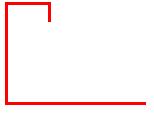
These basic designs correspond to the layout of the pyramids at Giza and Teotihuacan (Cfr., Earth/matriX, essay N.82), revealing a possible common denominator for both of these pyramidal sites. In fact, the basic design obeys the layout of the cross-section of the Great Pyramid at Giza (Cfr., Earth/matriX, Extract N.8). We shall offer here a summary view of the coincidence of lines in the different designs.
The basic designs would appear to have a relevancy to the hieroglyphs of ancient kemi
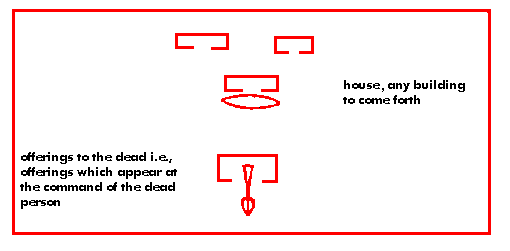
Note that these glyphs refer to building structures, like houses or mansions, and may be found in similar forms in other cultures, such as the maya (k'awil symbol), and in ancient China.
The basic designs, when overlaid upon the grid systems of Giza and Teotihuacan, reveal a coincidence of lines that causes one to consider such a design as having been possibly one similar to that used in the layout of the pyramidal sites themselves. Not only can one account for all of the principal pyramids, but even all of the secondary pyramidal structures obey the basic design, by forming relationships among themselves and in relationship to the main pyramids. Nothing seems to fall outside the scope of the basic design. If this were the case, then possibly, the ancients understood the concept of the cube (powers), and made a translation of these numbers into geometrical designs. In fact, by considering the natural numbers to the cube, many distinctive ancient designs become more comprehensible, As we shall see in later essays, even the slanted stairways that do not seem to coincide with the slope of the walls of the pyramids in some of the maya pyramidal structures reveal a specific logic of design. The graphing of the natural numbers to the cube produce geometrical designs that many account for many of these ancient designs that at first glance appear to be haphazard and illogical.
Let us present a few of the overlays of the basic designs (1-6-8-9; 5-12-13-10; etc.) regarding the grid systems of Giza and Teotihuacan.
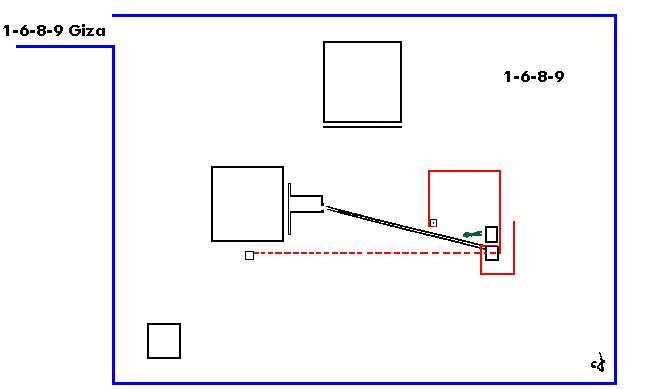

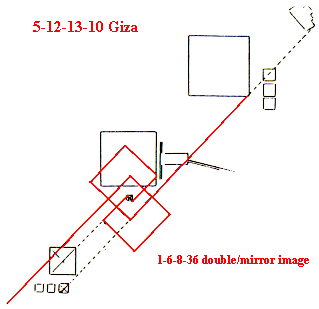
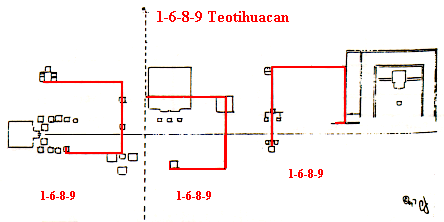

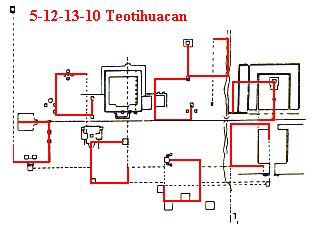
From these few illustrations, it becomes apparent that the design of both pyramidal sites seems to obey a similar theoretical concept underlying their layout. This similarity of concept becomes even more visible when we compare both sites together and with respect to multiple sets of designs.
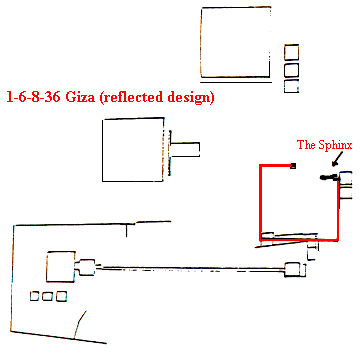
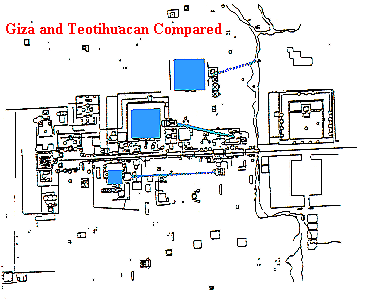
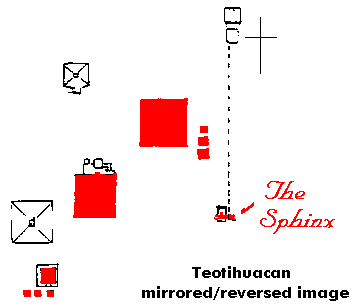

From the previous illustrations one may observe how there appears to be an inner logic to the layout of the pyramidal structures at all levels at both of these sites. And, that these particular designs appear to be more related than previously contemplated. During this century it has been difficult for many archaeologists to accept the possibility that the pyramidal structure may enjoy a designed relationship to astronomical events in the sky. However, the case may be that, not only are the pyramidal structures placed in relation to events in the sky and the Universe, but the internal layout of the grid system may reflect more theoretical posits of a mathematical and geometrical nature. For example, the numbers produced by the cube of the natural numbers 1-6-8-9, 1-6-8-36, 5-12-13-10, etc., are relational and relevant to historically significant numbers and the day-counts employed by both of these ancient cultures.
Earth/matriX, PO Box 231126, New Orleans, La. 70183-1126
Your comments and suggestions are greatly appreciated:
e-mail: johnson@earthmatrix.com
Science in Ancient Artwork
The Pyramids of Giza and Teotihuacan
Extract N.10
© 1997-2011 Copyrighted by Charles William Johnson. All Rights Reserved
Earth/matriX,
P.O. Box 231126 New Orleans, LA 70183-1126; USA
Reproduction prohibited without written consent of the author.
| Home | Books | Forum | Links | Author |